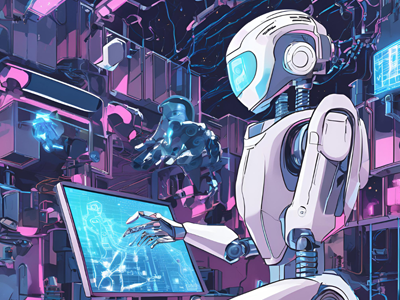AI integrated into robotics has immense innovation opportunities created from industry to healthcare and service sectors. Introduction of AI in robotics also provides some new challenges for lawmakers and legal professionals to develop appropriate regulations that would define etiquette, safety, liability, and protection of data.
AI allows one to dream of the possibility of independent movement by vehicles, which requires a special approach to the regulation and standardization of such technologies. AI can also be used in industrial robots that are able to perform complex and dangerous production processes, thus increasing both labour productivity and labour safety. AI in medical robots is being used to perform precision surgery, diagnosis, and patient care; hence, there are issues of liability and medical privacy. It also includes gadgets for home care, education, and entertainment, whereby AI helps tune up the functionality of robots to what users need and prefer.
Robots using AI often process and store large volumes of data, including personal data of users. This should be safeguarded in conformance with applicable legislation on the protection of privacy. The design and operation of AI-enabled robots should be informed by ethical standards that avoid possible abuses and respect human rights and freedoms. Provide special norms and standards that define the requirements regarding the safety, efficiency, and reliability of AI-enabled robots.
Artificial Intelligence in robotics is one of the most promising areas in which the achievements could, in a number of aspects, change the very essence of human activity. At the same time, successful and safe use of such technologies is conceivable only under the condition that an adequate legal framework regulating the use of AI, data protection, and the protection of human rights is created, and responsibility for the actions of robots is defined. It will require all efforts of legislators, technology developers, and society to develop and put into practice this framework.
Artificial Intelligence — What is it?
Artificial Intelligence (AI) refers to a sub-area of computer science concerned with the designs of machines that can do things, usually using human intelligence. Specifically, it is the ability of a computer program or a machine to think, learn, and improve itself from experience, learning (acquiring information and rules for using the information), reasoning (drawing inferences from rules to reach approximate or definite conclusions), and self-improvement. In particular, AI — in machine learning — has the ability to learn without explicit programming in order to conduct automatic data processing.
Major AI components and methods include:
- Machine Learning: Technologies that enable computers to learn from data and make predictions or decisions based on previous experience.
- Deep learning is a subset of machine learning consisting of highly complex neural networks with many abstraction layers.
- The inspiration for neural networks lies in the structure of the human brain, which, after being trained on vast data, is capable of learning and recognizing patterns.
Various applications of AI burst into the following industries:
- Healthcare diagnosis, creating personalized treatment plans, and management of medical data.
- Financial Services-Automation of Trading, Risk Management, Fraud Detection
- Automotive- Development of Autonomous vehicles and Driver assistance systems.
Ethical and legal aspects of AI use demand special attention because the issues of privacy, security, and responsibility for machines’ decisions arise. Of course, this presupposes the real development of legislative and regulatory frameworks that will regulate the use of AI in accordance with its safe and effective application in the interests of society.


